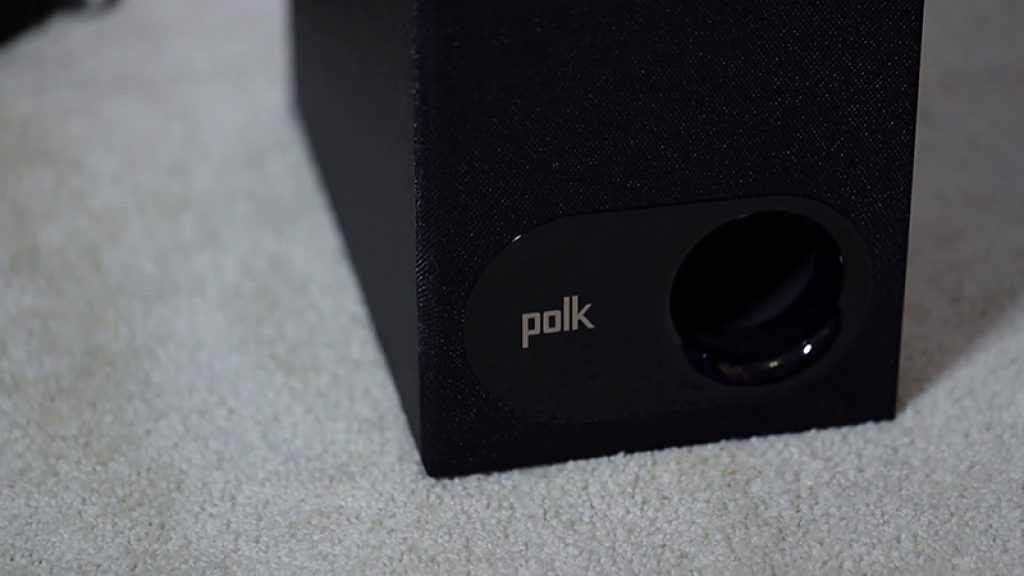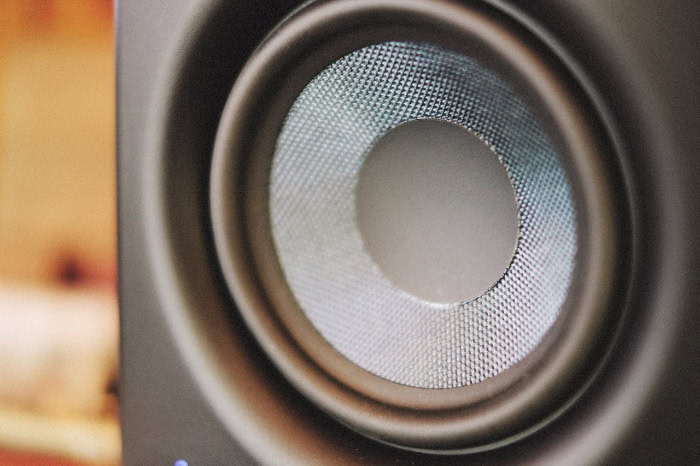Active vs. Passive Subwoofers: Why Your Selection Matters

The pursuit of deep, impactful bass leads to a critical decision: active or passive subwoofers. This is not just a technical detail; it is a choice between streamlined integration and ultimate system control.
Active subwoofers bundle an amplifier and driver into one self-contained unit, delivering a factory-tuned solution that simplifies setup for most home theaters and stereo systems. In contrast, passive subwoofers separate the amplifier, offering a modular approach favored in custom and car audio builds where tailored power and processing are paramount.
Each path has distinct implications for performance, wiring, cost, and future upgrades, making an informed decision essential for achieving your desired audio foundation.
What They Are
An active subwoofer, also known as a powered subwoofer, is a self-contained audio system. It includes the subwoofer driver, the enclosure, and a built-in amplifier all in one cabinet.
Because the amplifier is integrated, it is factory-matched to the driver's power handling and impedance requirements, creating an optimized, cohesive unit.
A passive subwoofer is a more basic component, consisting of only a driver housed within an enclosure. It contains no internal power source or amplification.
To produce sound, it must be connected to an external amplifier or an AV receiver with sufficient power output, much like a conventional bookshelf or tower speaker.
Signal and Power Path
Active subwoofers are designed for simple integration. They accept a low-level audio signal, typically through an LFE (Low-Frequency Effects) or RCA input, directly from an AV receiver or processor.
The subwoofer connects to a standard wall outlet for its power, as its internal amplifier must be energized independently of the receiver.
The signal path for a passive subwoofer is entirely different. It receives a high-level, amplified signal from a separate, external power amplifier via speaker wire.
The amplifier's power output (RMS watts) and impedance rating (ohms) must be carefully matched to the subwoofer's specifications to ensure safe, optimal performance.
Common Applications
Active subwoofers dominate the home theater and stereo markets due to their convenience. Their plug-and-play nature makes them easy to integrate with most modern AV receivers, which provide a dedicated subwoofer output.
This straightforward setup makes them the go-to choice for most consumer-level audio systems.
Passive subwoofers are prevalent in scenarios where system customization and external power are standard. They are common in custom-installation home theaters that use centralized amplifier racks and in car audio, where high-powered external amplifiers are a given.
This modular approach allows builders to create highly scalable and tailored bass systems.
Setup and System Integration

Integrating a subwoofer correctly is crucial for achieving seamless, powerful low-frequency performance. The process differs significantly between active and passive models, with one prioritizing user-friendly installation and the other offering a path for deep customization.
Connectivity and Control
Active subwoofers are built for simplicity, connecting to an AV receiver or preamplifier through a single RCA or LFE cable. Most active models also feature onboard controls, typically including a volume dial, a variable crossover filter, and a phase switch.
These controls allow users to fine-tune the subwoofer's output to blend smoothly with the main speakers directly on the unit itself.
Passive subwoofers connect via standard speaker wire, just like traditional speakers. They have no onboard controls and are entirely dependent on upstream equipment.
All adjustments, such as volume, crossover points, and phase correction, must be handled by the external amplifier, an AV processor, or a dedicated digital signal processor (DSP) in the audio chain.
Power and Amplifier Matching
With an active subwoofer, amplifier matching is not a concern for the user. The internal amplifier is designed and optimized by the manufacturer to work perfectly with the specific driver in the enclosure.
This factory-matched pairing ensures the driver receives the appropriate amount of power without risk of damage, providing reliable performance out of the box.
Pairing a passive subwoofer with an amplifier requires careful consideration. The external amplifier's power output, measured in RMS watts, must align with the subwoofer's power handling capabilities.
Its impedance rating, measured in ohms, must also be compatible. An underpowered amplifier can produce a clipped signal that damages the driver, while an overpowered one can physically destroy it.
Proper matching is essential for both sound quality and component safety.
Bass Management
Modern AV receivers are designed to integrate effortlessly with active subwoofers. The receiver’s internal bass management system directs low-frequency information to its dedicated LFE or sub-out port.
The user simply connects the cable and adjusts settings within the receiver's menu, making setup straightforward.
Integrating a passive subwoofer is a more involved process. The AV receiver's LFE output cannot power a passive sub directly, so the signal must first go to an external amplifier.
This amplifier then powers the subwoofer. The filtering and level-matching must be managed either by the external amplifier's capabilities or a separate processor, adding a layer of complexity to the configuration.
Performance and Features
Beyond the initial setup, the choice between active and passive subwoofers directly impacts acoustic performance, available features, and long-term operational factors. An active subwoofer is an optimized but closed system, whereas a passive configuration offers a modular approach that can be scaled for greater output and tailored processing.
Scalable Output and Headroom
Active subwoofers provide performance that is carefully optimized by the manufacturer. The built-in amplifier is engineered to complement the driver, delivering a predictable and reliable output level with a specific amount of headroom.
While this pairing is efficient, it is also finite; the subwoofer's maximum output is limited by the integrated amplifier's power.
Passive systems offer a pathway to much higher output levels. Because the amplifier is separate, users can choose an amplifier with immense power reserves to drive one or more subwoofers.
This scalability allows for significantly greater dynamic headroom, making passive designs a common choice for large rooms or for users demanding extreme sound pressure levels that consumer-grade active subs cannot achieve.
Onboard Controls and Processing
A significant advantage of active subwoofers is the inclusion of built-in controls. Most models feature dials for adjusting gain (volume), setting the crossover frequency, and switching the phase.
Many also include convenient features like an auto-on function that powers up the sub when it detects a signal. More advanced active subwoofers incorporate sophisticated digital signal processing (DSP) for automatic room correction and equalization.
Passive subwoofers are entirely devoid of such features. All processing and control functions are shifted to external components. The crossover, equalization, and level control must be managed by the AV receiver, a dedicated external DSP, or the power amplifier itself.
This externalizes the control, providing flexibility but requiring additional hardware and configuration.
Thermal Management and Reliability
In an active subwoofer, all electronics are housed within the sealed enclosure. The amplifier generates heat during operation, which becomes concentrated inside the cabinet.
While manufacturers design for this, continuous high-output use can lead to thermal stress over time. Placing the amplifier and driver in a vibrating box also subjects the electronic components to constant mechanical stress.
A passive system separates the amplifier from the subwoofer enclosure. An external amplifier can be placed in a dedicated, well-ventilated rack or location, allowing for superior heat dissipation.
This separation can contribute to the longevity of the electronic components by protecting them from both heat buildup and mechanical vibration, a factor that is especially important in high-power professional or custom installations.
Installation and Practicality

The practical aspects of installation often play a decisive role in choosing a subwoofer. The physical realities of wiring, component placement, and system compatibility highlight the core trade-off between the convenience of an all-in-one unit and the flexibility of a modular system.
Complexity and Wiring
Installing an active subwoofer is typically a straightforward, plug-and-play process. The wiring is minimal, requiring only a signal cable (like an RCA or LFE cable) run from the AV receiver and a power cord connected to a nearby electrical outlet.
This simplicity makes it an accessible option for nearly any user, regardless of technical expertise.
A passive subwoofer installation is considerably more involved. It requires running heavy-gauge speaker wire from the subwoofer's location back to a separate, external amplifier.
That amplifier, in turn, needs to be connected to a power source and receive a signal from the AV processor. The additional components and wiring runs add significant complexity, often requiring more planning and effort, especially for in-wall installations.
Space and Placement Considerations
An active subwoofer's main placement constraint is its need for a nearby AC power outlet. Since the amplifier is built into the cabinet, the enclosure can be larger and heavier than a comparable passive model.
The available locations for the subwoofer may be limited by the room's power outlet layout.
Passive subwoofers offer more placement freedom for the subwoofer itself. Because there is no internal amplifier, the enclosure can be more compact, lighter, or designed for custom applications like in-wall or in-floor mounting.
However, this flexibility comes at the cost of needing to find a suitable location for the external amplifier, which requires rack space or a dedicated spot with proper ventilation.
System Compatibility and Constraints
Active subwoofers are designed for seamless compatibility with the vast majority of consumer AV receivers. Since the subwoofer provides its own power, it does not tax the receiver's internal amplifiers.
The receiver simply sends a line-level signal, a task for which it is explicitly designed, simplifying integration and ensuring consistent performance.
Passive subwoofers are best suited for audio systems built around centralized, external amplification. They integrate naturally into high-end custom theaters or professional setups where racks of amplifiers are already powering the main speakers.
For a standard home theater system centered on an AV receiver, adding a passive subwoofer is less practical, as it requires purchasing and integrating a separate power amplifier, which adds cost and complexity.
Cost and Upgrade Path
The financial implications and long-term potential of a subwoofer system extend beyond the initial purchase price. The choice between an active and passive model influences not only the upfront expenditure but also the flexibility for future improvements.
How value is perceived often depends on the user's budget, technical goals, and willingness to invest in a modular system.
Upfront vs. Total Cost
An active subwoofer has a higher initial purchase price because it bundles the driver, cabinet, and amplifier into a single product. However, there are few, if any, additional costs beyond a signal cable.
This all-in-one pricing makes it easy to budget for, as the unit is a complete solution out of the box.
A passive subwoofer often appears cheaper on its own. The price tag only covers the driver and enclosure, not the necessary amplification.
To calculate the total cost, one must add the price of a suitable external power amplifier, quality speaker cables, and potential installation expenses. When all components are accounted for, a passive system can easily meet or exceed the cost of a comparable active subwoofer.
Flexibility and Future Upgrades
Active subwoofers are self-contained units, which simplifies setup but limits modularity. If the internal amplifier fails outside of warranty, repair can be difficult or expensive, sometimes necessitating the replacement of the entire subwoofer.
Similarly, upgrading means selling the old unit and buying a new one; you cannot upgrade just the amplifier or driver.
Passive systems offer superior flexibility for future upgrades. The amplifier and the subwoofer are independent components, allowing either to be replaced or upgraded separately.
If you desire more power, you can simply purchase a more robust amplifier without changing the subwoofer. This modular design is advantageous for enthusiasts who enjoy tweaking and evolving their system over time.
Value by Market Segment
For entry-level and mid-tier home theater systems, active subwoofers generally offer better value. The bundled, factory-optimized design provides excellent performance for the price without requiring additional purchases or complex setup.
The convenience and predictable performance make them a cost-effective choice for most consumers.
At higher performance levels, particularly in custom installations, passive subwoofers can become the more cost-effective option. Investing in a single, high-quality, multi-channel amplifier to power several passive subwoofers can be more economical than buying multiple high-end active models.
This approach allows for tailored amplification and scalable performance that provides long-term value for serious audio builds.
Conclusion
The final decision rests on your specific goals for performance, convenience, and system design. For the majority of home theater and stereo applications, an active subwoofer is the most practical and effective solution.
Its all-in-one design ensures reliable integration with minimal setup, aligning perfectly with the LFE output on modern AV receivers to deliver powerful bass with little effort.
Conversely, for users who prioritize maximum flexibility, scalability, and system control, a passive subwoofer is the more adaptable choice. In custom installations, car audio, or high-performance builds, pairing a passive sub with a carefully matched external amplifier and a dedicated DSP provides unparalleled command over the low-frequency output, creating a truly tailored audio foundation.


